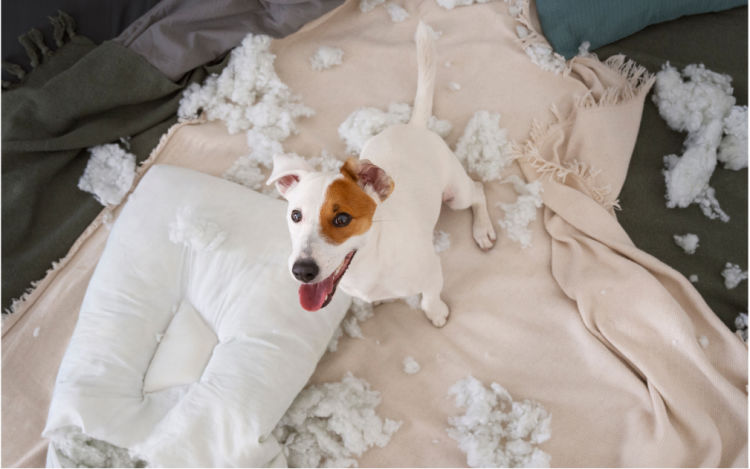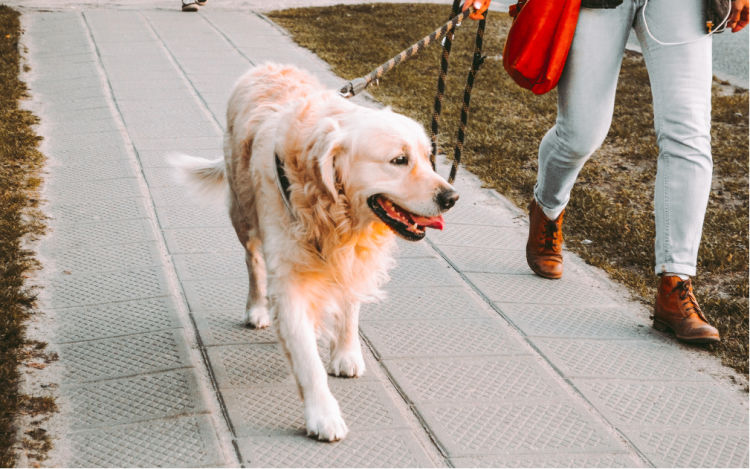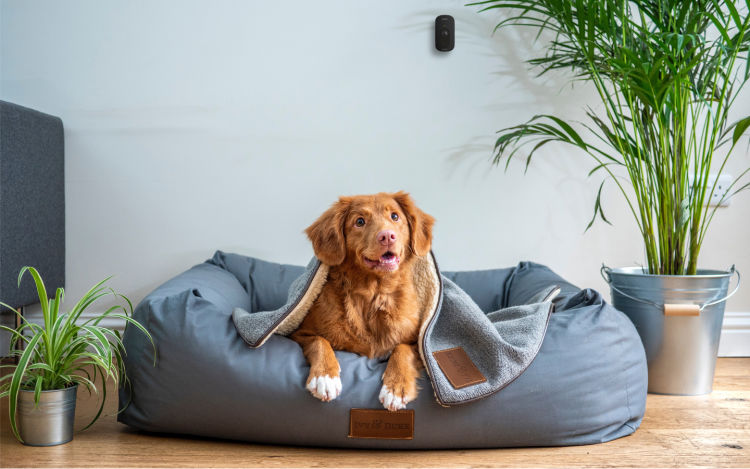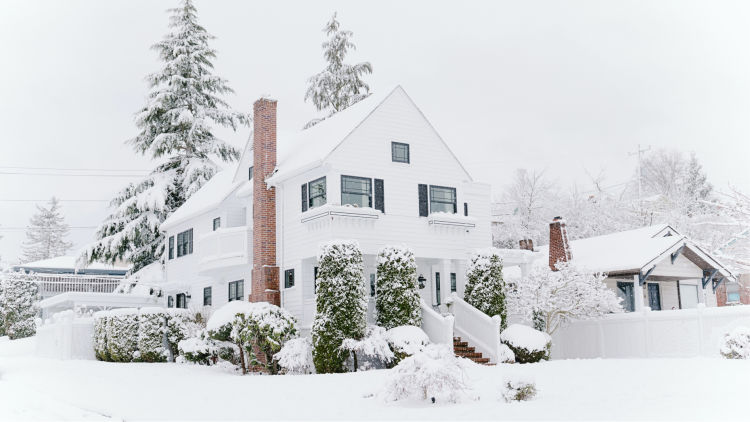How To Ease Your Dog's Separation Anxiety
by ecobee on 08/23/2022 in Life & Family
6 min read

There was a boom in pet adoptions during the pandemic. Work from home initiatives coupled with scattered lockdowns left folks looking for meaningful connections. And what better connection than a four-legged friend? Statistics show that nearly one in five American households and three in ten Canadians welcomed a new pet during the pandemic. Those numbers included many dogs. But as folks return to the office and resume their pre-Covid activities, some canines are struggling with the transition.
If a pup is used to having their owners around all day, they may suffer from separation anxiety when they leave. It’s a complex issue for both pets and owners, but the good news is that you can help your dog beat separation anxiety by following a few simple rules.
We chatted with Julia Mueller, certified dog trainer and owner of Toronto’s Treat, Praise, Love, about how to identify separation anxiety, how to best support your dog, and best practices for overcoming the issue.
What is separation anxiety?
“Usually, it’s a condition triggered when the dog no longer has access to their human. That can cause varying levels of emotional distress to the animal,” Mueller explains. According to the American Kennel Club, around 14% of dogs are affected by separation anxiety. Dogs are extremely social animals. They also thrive on routine. When both these things change in a short period of time, emotional distress can manifest in abnormal, destructive, and mischievous behaviours.

How do I know my dog has separation anxiety?
Separation anxiety is not easy to detect at first. “Many dog owners have no idea their dog has separation anxiety until they receive complaints from neighbors about vocalization or the dog scratching at the doors or windows,” said Mueller.
If an owner isn’t there to observe the behavior in person, they may mistake the symptoms with boredom, poor training, or inherent traits from the animal's breed. “I often get calls from owners concerned that their well-trained dog is suddenly having accidents in the house or becoming destructive. Most often, these turn out not to be training problems but rather separation anxiety issues.”
According to a study from the Journal of the American Veterinary Medical Association, the most common behaviours related to separation anxiety are destruction in the home (in 71% of dogs), excessive vocalization (in 61% of dogs), and inappropriate elimination (in 28% of subjects). Following the owner around, restlessness, pacing, attempts to escape, lack of appetite, and exuberant greetings are also very common symptoms.
“Signs of separation anxiety in dogs include excessive vocalization and destruction in the home.”

How can I help my dog overcome separation anxiety?
Helping your dog overcome separation anxiety requires patience, training, and of course love. Here is what Mueller recommends:
1) Consult your vet, a trainer and/or an animal behaviourist.
First, you should confirm the behavioural problems are being caused by separation anxiety. A professional can help. “For many dogs, trainer intervention is necessary to ensure the dog is not feeling undue stress. We are trained experts in dog body language and can often pick up on subtle changes in behavior that the owner cannot. This helps to pinpoint exactly when the stress starts and what is the initial trigger.”
To find the best professional to help your best friend, Mueller gives you a great tip: “The sign of a good trainer is someone who makes your dog's emotional well-being and physical safety their top priority, this is especially important when you are dealing with behaviors rooted in anxiety and possibly fear.”
2) Use their crate.
An incredibly helpful tool for managing separation anxiety is the crate. Mueller explains: “Crate training can be very difficult for some dog owners, and oftentimes it is best to involve a professional trainer who can teach the dog that, when used properly, the crate is a happy, calm place where great things happen.”
3) Reinforce out bounding habits before leaving home.
Creating out bounding habits can help your pet be more relaxed for departure. They help your dog know that it isn’t a bad thing when you leave. “A good starting point is to have a trainer work with you to find a way to fill the dog's physical, mental and emotional needs prior to you leaving the house. This can be done through rigorous exercise, mental stimulation through training (such as teaching them new tricks), enrichment activities, and finally, specific training that conditions the dog to love seeing you get ready to leave because it means great things are about to happen.”

4) Be with your dog, even from far away.
Investing in a pet camera can give you peace of mind, allowing you to observe your friend while you’re away from home. ecobee SmartCamera with voice control is popular among pet owners. SmartCamera comes with Smart Focus, detecting when your dog enters the frame and keeping them front and center as they move.
5) Keep your furry friend busy and happy.
Try to keep your pet stimulated when you are away. Toys with special treats can help.“A great, long-lasting treat you can leave with your dog is a heavy-duty, stuffable rubber food toy filled with their favorite foods. You can soak kibble in water and blend it with dog-safe fruits, vegetables, and a couple of extra smelly treats or meat. Put some cream cheese or peanut butter in the bottom of the toy, stuff the toy with your kibble mixture and put it in your freezer (tip: only freeze the bottom half the first few times you leave it with your dog). Your pet will spend hours licking the frozen food out of the toy, which will keep them busy and tire them out!”
To stimulate other senses, you can also play music and open the curtains so your dog can inspect what’s going on outside. The new ecobee Smart Thermostat Premium comes with a smart speaker, Alexa and Siri built-in, and Spotify Connect so you can play music directly from the thermostat. It’s also a great idea to make sure they have plenty of comfortable places for a nap.
As one last tip, Mueller recommends not giving up on training: “Practice makes perfect, and that applies to the behaviors you want as well as the behaviors you don't want—so it is best to stop these behaviors in their tracks!” We couldn’t agree more: our best friends deserve all the care, love, and patience we can offer.
Did you enjoy this article?
Thanks for letting us know!






